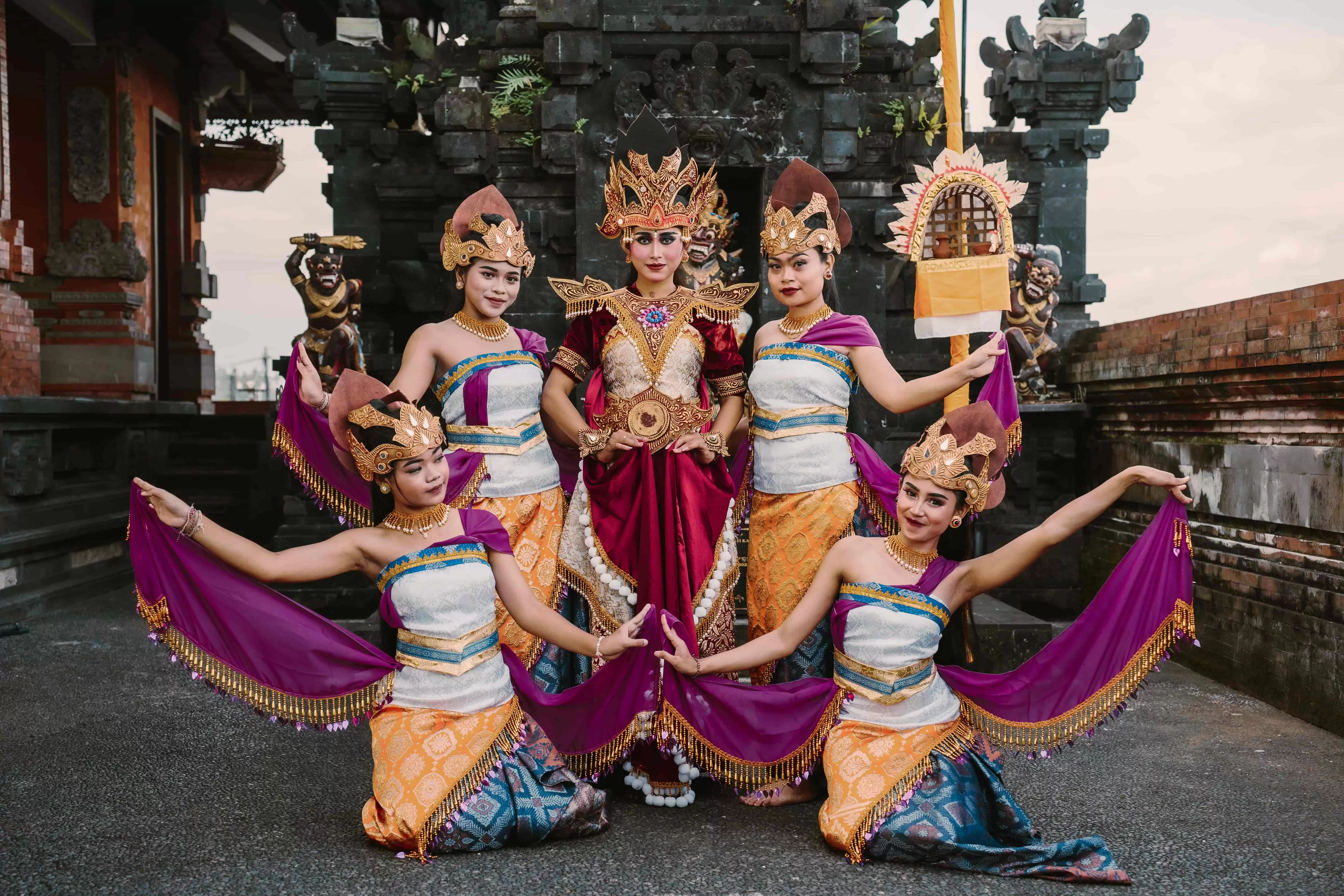The Story Behind Subali and Sugriva in Balinese Performance Art

The epic stories of the Ramayana have been passed down through generations across Asia, told and retold through music, dance, and shadow puppetry. In Bali, these ancient tales are more than literature—they are living narratives, embedded in ceremony and celebration. Among the many legends within the Ramayana, the story of Subali and Sugriva stands out as a powerful tale of loyalty, betrayal, and redemption. At Giriwana Artsphere, this myth is reimagined in a bold new way through the Subali Sugriva Dance, a performance that brings Balinese mythology to life through contemporary artistry.
Two Brothers, One Destiny
Subali and Sugriva are brothers—both monkey warriors, both strong and devoted. Their story is one of deep brotherhood shattered by misunderstanding and conflict. As told in the Ramayana, Subali is the older brother and king of Kishkindha, while Sugriva is loyal but underestimated.
Their bond is tested when Subali enters a cave to fight a powerful demon. He tells Sugriva to wait outside, but after days of silence, Sugriva assumes the worst and seals the entrance to protect their kingdom. When Subali finally emerges, victorious but enraged, he believes Sugriva betrayed him. Consumed by anger, he banishes Sugriva.
The fallout from this misjudgment sets the stage for one of the most emotionally complex arcs in the Ramayana. It is a tale not just of heroism, but of pride, loss, and the painful path toward reconciliation.
Balinese Mythology on Stage
In Balinese culture, stories like Subali and Sugriva’s are not confined to temples or texts. They live on in the form of Bali art performance—from wayang kulit (shadow puppets) to dramatic kecak dances and masked dramas. These performances serve as a way to teach values, preserve history, and create communal reflection.
The beauty of Balinese storytelling is its depth. Characters are not one-dimensional; they are layered with emotion and moral complexity. Subali, though powerful, is deeply flawed. Sugriva, though loyal, is haunted by guilt. This nuance makes the story ideal for reinterpretation in modern performance.
Reimagining the Epic with Giriwana
Giriwana Artsphere’s Subali Sugriva Dance is not a simple retelling—it’s a transformation. Rooted in the classical tradition, the performance departs from the expected. It begins not with an overture, but with silence—broken only by the sound of breath and body. The dancers become instruments, using their voices and physical rhythm to set the emotional tone.
There are no elaborate costumes or towering stage props. Instead, Giriwana strips the story down to its emotional core. The choreography emphasizes physical tension, eye contact, and the intimate push and pull between the brothers. The absence of gamelan allows every footfall and exhale to be heard—every movement charged with unspoken dialogue.
This minimalist yet powerful interpretation resonates with modern audiences. By focusing on raw emotion and symbolic gesture, the performance bridges ancient storytelling with contemporary aesthetics.
Symbolism in Movement
One of the defining aspects of the Subali Sugriva Dance is how it translates complex themes into physical language. Subali’s power is shown in wide, grounded stances and explosive movements. Sugriva’s uncertainty is expressed through hesitation, circular motions, and open hands. Their battle becomes a dance of dominance and surrender, of accusation and pleading.
When the reconciliation comes, it is not spoken—it is danced. A slowing of rhythm, a shared breath, a mirrored movement. The resolution is subtle but profound, leaving audiences breathless.
The emotional weight carried by the dancers is a testament to the depth of Balinese mythology, where even gods and warriors are portrayed with human fragility. Through this lens, the story of Subali and Sugriva becomes more than a legend—it becomes a mirror for our own struggles with pride, forgiveness, and trust.
A Story That Transcends Time
The Ramayana has endured for thousands of years because its themes remain relevant. The story of Subali and Sugriva is a timeless reminder of how relationships can be fractured by assumptions, and how healing requires humility. In a world often fractured by division, this message could not be more powerful.
Giriwana’s interpretation invites audiences to feel this story, not just understand it. And that is the magic of Bali art performance—it transforms mythology into lived experience.
Where to See the Performance
To experience the Subali Sugriva Dance in person, you can attend the weekly performance at Raja Bali – Balinese Authentic Restaurant & Activities in South Kuta. The venue offers an intimate setting, perfect for this emotionally charged piece.
-
Show Schedule: Every Saturday, 19.15 – 20.15 WITA
-
Location: South Kuta, Bali
-
Ticket Price: IDR 150.000
-
Online Booking Discount: 10% off
This is not a tourist trap. It is a sincere offering by a community of artists committed to sharing their culture with care, respect, and innovation.
Final Thoughts
The Subali Sugriva Dance is more than a performance—it is a cultural encounter. It invites you to sit with ancient stories, to feel their relevance, and to witness how art can transform even the most well-known tales into something deeply personal.
If you are searching for a meaningful Balinese mythology experience during your visit to Bali, make time to see this extraordinary show. Let it move you, challenge you, and stay with you long after the curtain falls.

